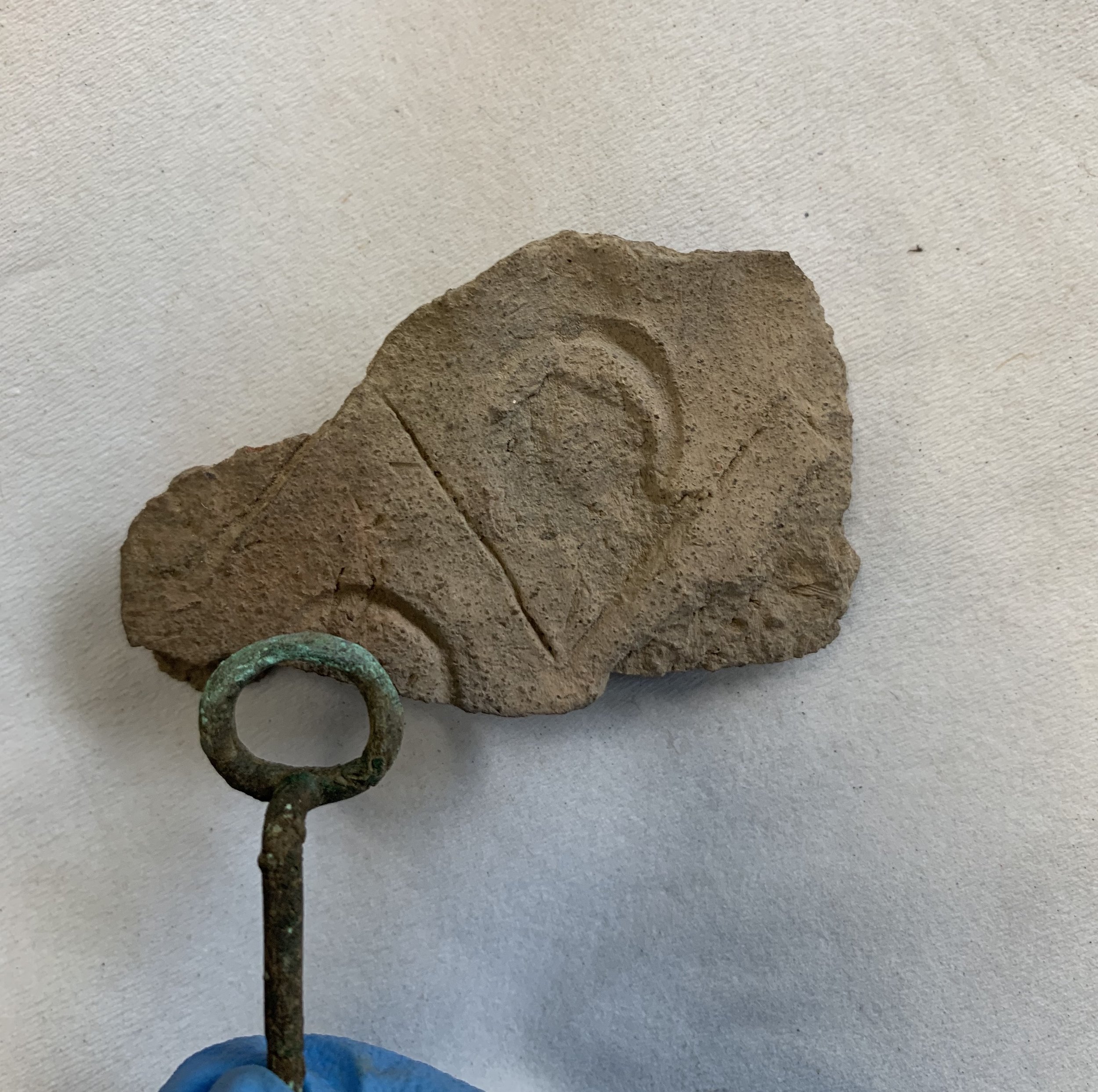
3D Printed Replicas
The objects in the gallery window at Clachtoll Beach Ranger Hut are replicas of 2000-year-old artefacts found at Clachtoll Broch during excavations in 2017.
They were created using data from highly accurate digital models, 3D-printed and then carefully painted by hand to imitate the originals as closely as possible.
Unlike their Iron Age counterparts, the replicas do not require special storage conditions; they can be displayed here while the artefacts are safely stored in environmentally-controlled conditions to ensure their longer-term survival.
Combs and spindle whorls
It is very likely that textiles were being produced at the broch.
Long-handled combs like this are thought to have been used in weaving. You can see how worn one of them is, used until only one tooth remained. Both are made of antler, an important resource in the Iron Age.
The stone spindle whorls were used in spinning wool. Each whorl would have sat at the end of a spindle, adding weight to help it twist strands of wool tightly together.
Pin and pottery
These two items weren’t found together, but conservators working on the artefact assemblage noticed that they are a perfect match: it looks as though the head of the pin was used to impress circular shapes into the wet clay of the pot. Perhaps the tip was used to mark the zig-zag lines too.
The pin would have been worn as an accessory, holding clothing together. It is easy to imagine the potter using it to swiftly decorate a pot before replacing the pin among the soft folds of fabric.
Reaping hook
This reaping hook would have been used in harvesting barley grown near the broch. Traces of the handle, made from birch, survive among the iron corrosion.
The hook was found with two larger examples, among a cluster of iron agricultural tools at one side of the broch. Perhaps they were all neatly stored against the wall when the fire took hold.
Pommel
This pommel formed the end of the hilt (handle) of a weapon, possibly a small dagger. You can see how the hilt might have appeared to the right. It is made from the tooth/tusk of a marine animal, perhaps a whale.
The dagger would have been a rare, prized possession, the sort of thing that only a wealthy or well-connected person would have owned. This tells us something about the people of the broch: they were probably prominent and influential among the wider community.
Stone lamps
Stone bowls like this were used as lamps, with a wick resting on the edge. Analysis has shown that butter was probably used as fuel at Clachtoll. Some were broken when found, and their distribution in the broch suggests that they may have fallen from a height during a devastating fire at the end of the broch’s occupation.
Whalebone working surface
A whale’s vertebra was reused as a working surface or chopping block for craft activities. Can you make out the marks left behind by diamond-shaped and circular punches, or chop marks made by an axe or cleaver? The ring-shaped area of wear may have been created during spindle whorl manufacture. This artefact has provided an exceptional insight into the everyday craft activities carried out at the broch.
Only the top surface has been 3D printed; the original is around 14cm thick.










